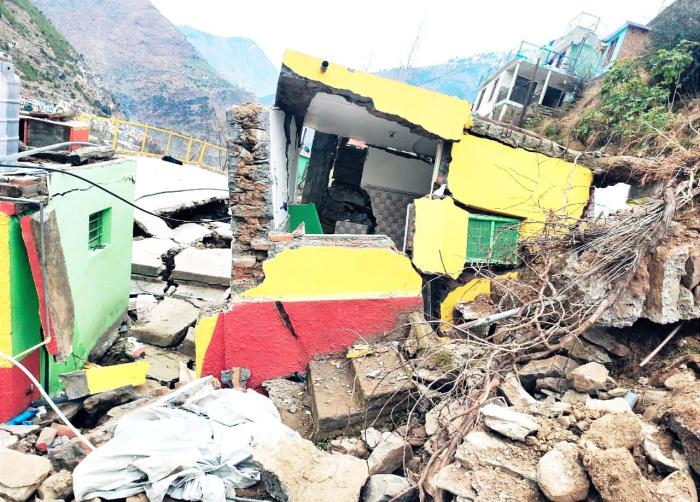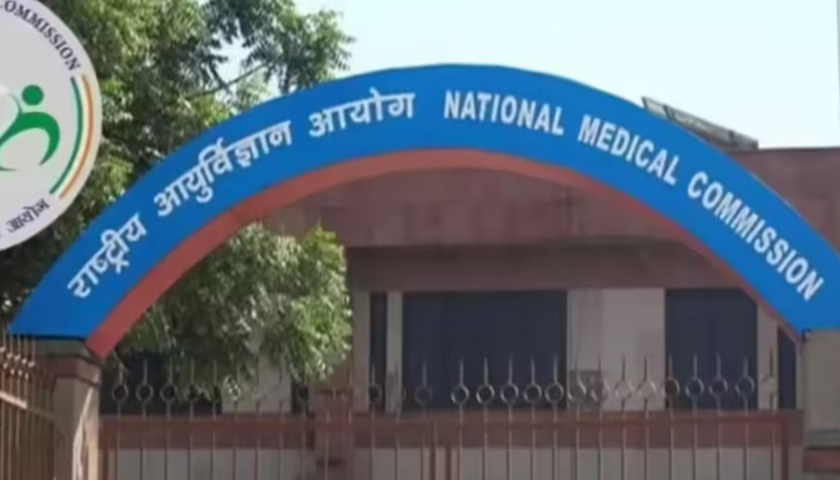In Kashmir’s hinterlands, promises of connectivity lie buried under landslides and bureaucratic neglect. What began as a lifeline now ends in mud, rubble, and unanswered questions.
By: Javid Amin | 23 September 2025
A Lifeline Turned Liability
In Kashmir, every road is more than just asphalt. It is a lifeline. The 270-km Srinagar–Jammu National Highway (NH-44), once hailed as an engineering marvel linking the Valley with the rest of India, today stands as a cautionary tale of modernisation without foresight.
What was once a nine-hour journey has turned into a 12–16-hour nightmare. Landslides, subsidence, and unscientific construction have reduced the highway into a corridor of chaos. From Khooni Nala to Shaitan Nala, folklore once warned travellers of natural hazards. But now, the danger is man-made, born of reckless blasting, tunnelling, and cutting into fragile Himalayan slopes.
The road that carried apples, soldiers, and shawl vendors now carries debris, broken promises, and public anger.
From Mughal Caravans to Modern Chaos
Long before flyovers and tunnels, the Banihal pass connected Kashmir with the Jammu plains. Mughal caravans, Sikh armies, and Dogra rulers used a perilous cart trail along which mountains seemed alive. The infamous Khooni Nala (blood-soaked ravine) and Shaitan Nala (devil’s gorge) earned their names from avalanches and falling rocks that swallowed travellers.
The British, recognising the need for safer transport, constructed the Banihal tunnel, later renamed the Jawahar Tunnel after India’s first Prime Minister, Jawaharlal Nehru. This tunnel, opened in the early 1950s, became the artery of post-Partition Kashmir.
For decades, the Border Roads Organisation (BRO) maintained the highway, known then as NH-1A. Snow avalanches and landslides would block the route in winters, sometimes for weeks, but the road never collapsed as dramatically as it does today.
“Snow was our enemy, not the road itself,” recalls Mushtaq Ahmad Bhat, who travelled to Aligarh Muslim University in the 1980s. “We respected the mountains. Now, the mountains are angry at what we have done.”
The Big Promise: Four-Laning
By the early 2000s, the National Highways Authority of India (NHAI) took over. With increasing traffic and the Valley’s economic aspirations rising, the Union Ministry of Surface Transport announced a grand plan: four-laning the highway.
Launched in 2011 with a 5-year deadline, the project promised to:
-
Cut the distance by over 50 km
-
Reduce travel time from 9 hours to 4 hours
-
Bypass treacherous stretches prone to landslides
It was divided into six ambitious sub-projects:
-
Srinagar–Qazigund (67.7 km)
-
Qazigund–Banihal (15.25 km)
-
Banihal–Ramban (36 km)
-
Ramban–Udhampur (43 km)
-
Chenani–Nashri (9.2 km)
-
Jammu–Udhampur (65 km)
While most stretches neared completion, the Banihal–Ramban–Chenani section became the Achilles’ heel.
Instead of progress, it unleashed a cycle of blasting, debris dumping, deforestation, and collapses.
Modernisation and Its Discontents
The government showcased tunnels like Qazigund-Banihal (Atal Tunnel) and Nashri–Chenani (Shyama Prasad Mukherjee Tunnel) as evidence of modern engineering. Yet, for locals, the story was different.
“Every rain feels like a war with the mountains,” says Abdul Rashid, a Ramban shopkeeper.
Expert Voices
-
Riyaz Ahmad Mir, a geologist at the National Institute of Hydrology, Jammu:
“The slopes are geologically young and fractured. Blasting without proper studies makes even moderate rain dangerous. Landslides here are not natural accidents—they are man-made disasters.” -
Raja Muzaffar Bhat, environmental activist:
“Trees stabilise slopes. Remove them and landslides are inevitable. Much of the debris is illegally dumped into the Chenab, worsening the floods and erosion. Climate change matters, but unscientific construction is the immediate threat.”
Local Anguish
-
Ghulam Hassan of Digdol:
“Tunnels and flyovers did not calm the mountains. They made them revolt. We live in constant fear from March to September.” -
Shams, a teacher from Banihal:
“We are not against development. But development without science is destruction.”
A Seasonal Highway: Open in Winter, Closed in Rains
Ironically, the highway that once shut in winter is now more stable in snowy months than during rains.
-
April–July & September: Even light showers trigger landslides, mudslides, and shooting stones.
-
October–February: Thanks to tunnels, travel is somewhat safer, though heavy snow can still close stretches.
For residents, this means half the year is spent in fear of sudden road closures.
“From Banihal to Udhampur, every rainfall tests our patience and survival,” says Rashid of Ramban.
The Fragile Lifeline of Kashmir
NH-44 is not just a road. It is the economic artery of the Valley.
-
Apples worth ₹10,000 crore annually travel this highway.
-
Kashmir’s shawl traders, handicraft exporters, and students depend on it.
-
Soldiers, medicines, and food supplies all move through it.
When the highway collapses, so does Kashmir’s economy, culture, and trust.
“These disasters are no longer random. They are the mountains’ answer to careless planning,” says Ghulam Hassan.
Case Study: The Buried Road to Bungus
If NH-44 symbolises fragile modernisation, the Rajwar–Bungus road tells a story of betrayal.
Launched to connect Gujjar and Pahari villages and promote tourism in Kupwara’s Bungus Valley, the road remains half-built and half-buried.
-
Machinery rusts along the stretch.
-
Villagers walk miles through mud.
-
Landslides bury entire sections.
“We were told this road would change our lives. Now it’s just a trench of broken hopes,” says Gulzar Ahmad of Batpora.
Bureaucracy vs Ground Reality
Despite funds being allocated, contractors abandoned work, citing payment delays and departmental confusion. Villagers allege officials visit only for photo-ops.
A teacher from Rajwar puts it bluntly:
“It’s not just the road that collapsed—it’s the trust.”
Recent Tragedies Along NH-44
-
April 2025: Flash floods killed 3, destroyed fields, washed away 10 km of road near Kela Morh.
-
May–July 2025: Cloudbursts stranded apple trucks for weeks.
-
August–September 2025: 12,000 km of J&K roads damaged; NH-44 shut for nearly two weeks.
-
May 2022: A tunnel collapse killed 10 labourers.
Each tragedy deepened public anger, yet accountability remains missing.
Folk Warnings, Modern Lessons
The names Khooni Nala and Shaitan Nala were not just folklore—they were warnings. Today, they stand as metaphors for ignored wisdom.
-
In the past, travellers feared avalanches.
-
Now, they fear blasting, debris, and collapsing tunnels.
“The mountains are angry. Until we respect geology and ecology, tragedies will repeat,” warns Hassan of Digdol.
A Call for Accountability
Civil society, experts, and locals demand:
-
Independent environmental audit of NH-44.
-
Transparent timelines for road projects.
-
Disaster-resilient planning in landslide-prone areas.
-
Inclusion of local voices in infrastructure decisions.
“Without accountability, NH-44 will remain half-built and half-buried—like our hopes,” says environmentalist Raja Muzaffar Bhat.
Bottom-Line: A Road Half-Built, Half-Buried
The Srinagar–Jammu highway was meant to be a lifeline of prosperity. Instead, it has become a symbol of fragility and failed planning.
The buried Rajwar–Bungus road echoes the same betrayal—promises made, promises forgotten.
Kashmir’s mountains are young, fragile, and unforgiving. Until development respects this reality, modernisation will remain a mirage—and every rainstorm a reminder of broken promises.
As the Assembly session nears, locals ask the simplest of questions:
“Will words ever translate into roads? Or will we remain stranded, between mountains that remember every cut and every fallen tree?”




